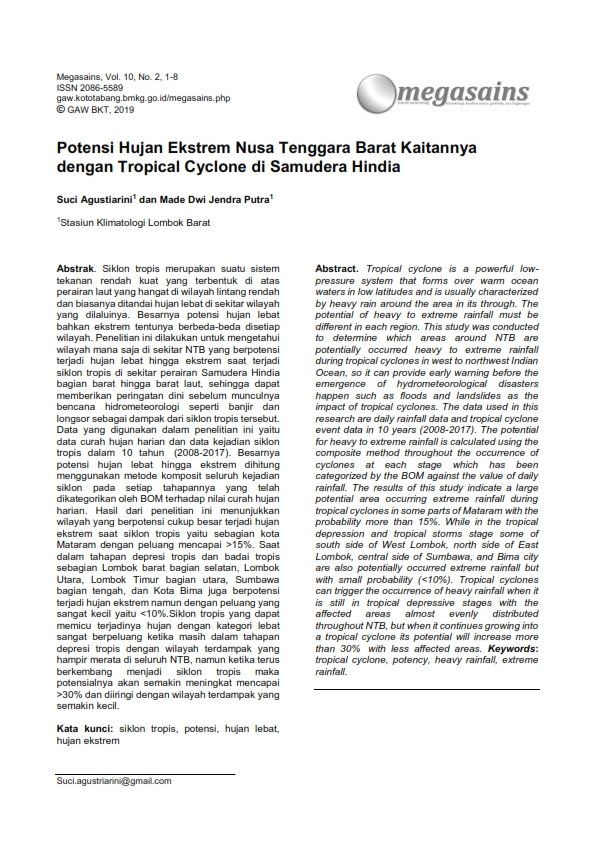Potential for Extreme Rain in West Nusa Tenggara in relation to Tropical Cyclones in the Indian Ocean
Main Article Content
Abstract
A tropical cyclone is a strong low pressure system that forms over warm ocean waters in low latitudes and is usually characterized by heavy rain around the area it passes through. The potential for heavy and even extreme rain certainly varies in each region. This research was conducted to find out which areas around NTB have the potential for heavy to extreme rain during tropical cyclones in the waters of the western to northwestern Indian Ocean, so that they can provide early warning before the emergence of hydrometeorological disasters such as floods and landslides as a result of cyclones. the tropics. The data used in this research are daily rainfall data and tropical cyclone occurrence data for 10 years (2008-2017). The potential for heavy to extreme rain is calculated using a composite method of all cyclone events at each stage which have been categorized by the BOM against daily rainfall values. The results of this research show that areas that have a large potential for extreme rain during tropical cyclones are parts of the city of Mataram with a chance of >15%. When in the tropical depression and tropical storm stages, parts of southern West Lombok, North Lombok, northern East Lombok, central Sumbawa and Bima City also have the potential for extreme rain but with a very small chance, namely <10%. Tropical cyclones can trigger There is a very good chance of heavy rain occurring when it is still in the tropical depression stage with the affected area being almost evenly distributed throughout NTB, but as it continues to develop into a tropical cyclone, the potential will increase to >30% and be accompanied by an increasingly smaller affected area.
Article Details

This work is licensed under a Creative Commons Attribution-NonCommercial 4.0 International License.
The author is willing to retain the copyright and grant journal rights to the first publication with works that are simultaneously under license the Creative Commons Attribution-NonCommercial-NoDerivatives 4.0 International. It allowing the others to share the work with recognition of the author's work and the initial publication in this journal.
Authors can enter into separate additional contractual arrangements for the non-exclusive distribution of published versions of journal works (for example, posting them to institutional repositories or publishing them in a book), with recognition of the initial publications in this journal.
Authors are permitted and encouraged to send their work online (for example, in their institutional repositories or websites) before and during the submission process because it can lead to productive exchanges, as well as previous and larger citations of published works.

